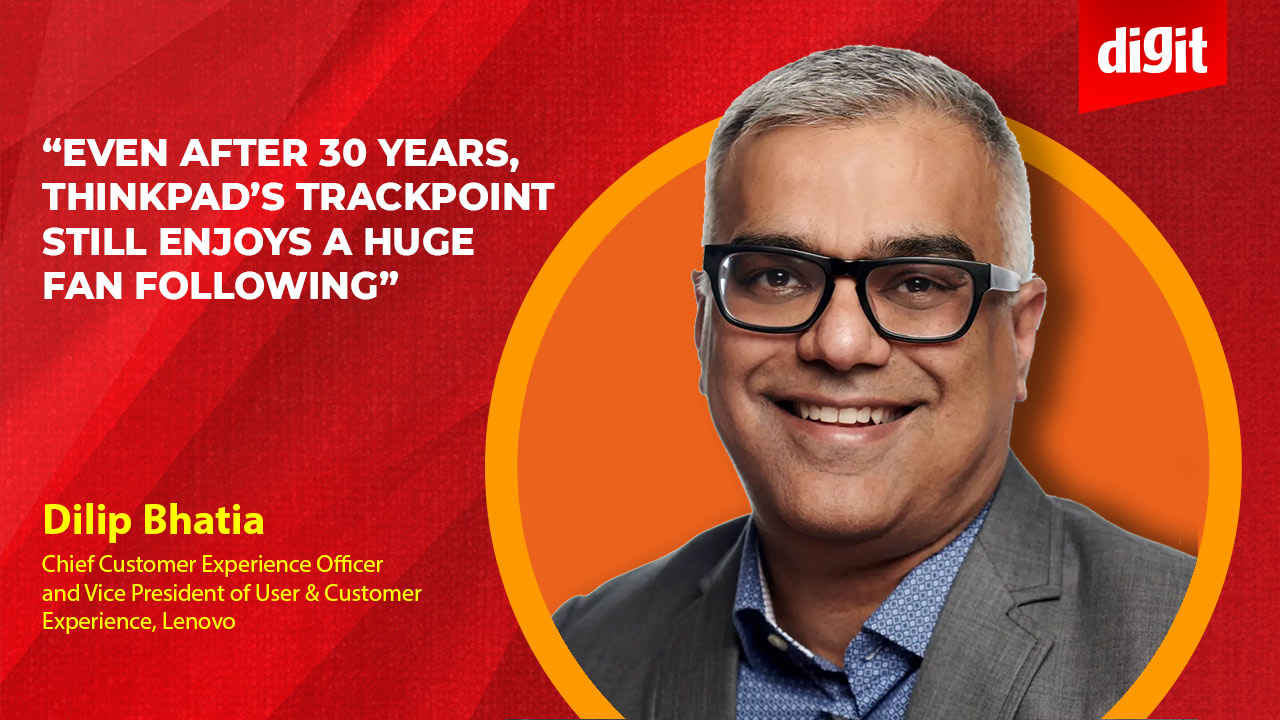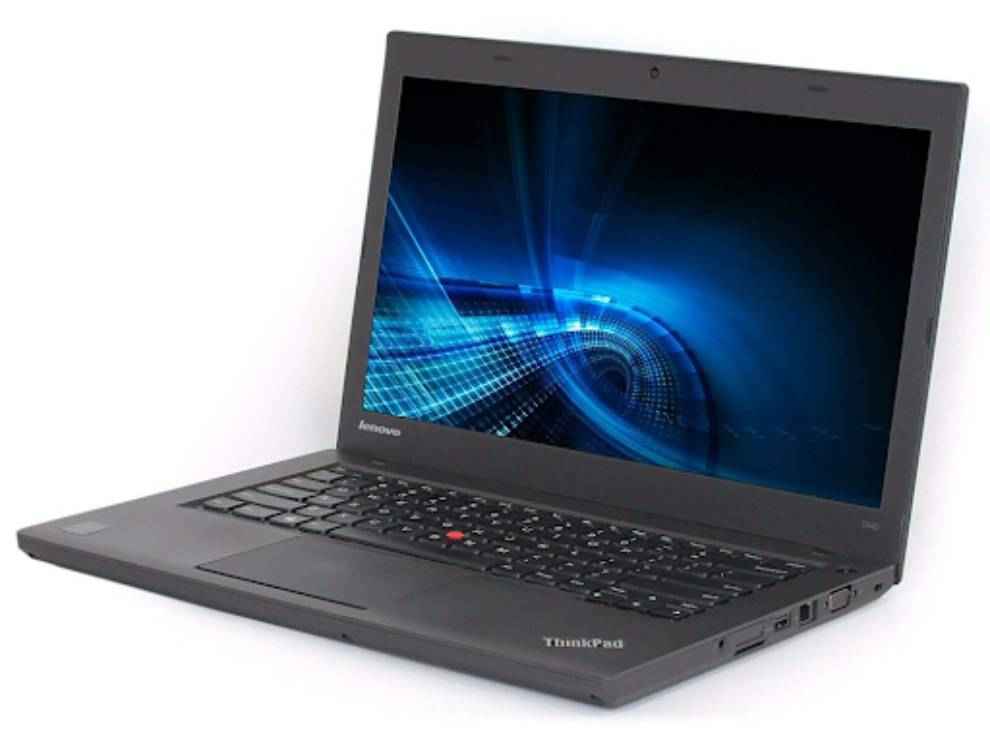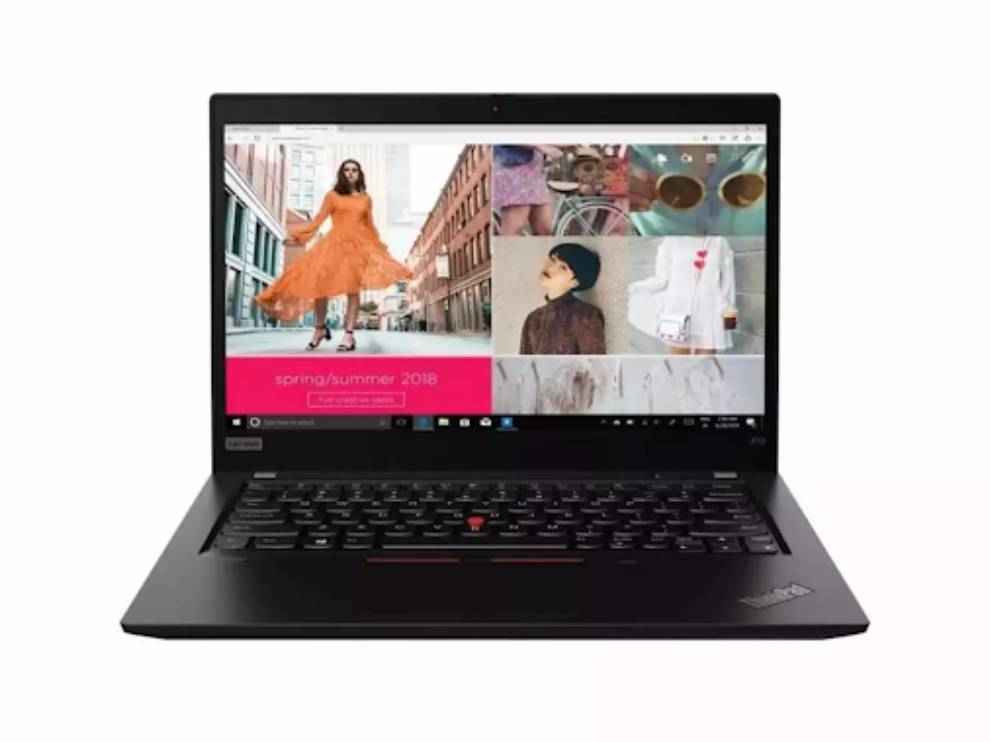In conversation with Dilip Bhatia, Chief Customer Experience Officer and Vice President of User & Customer Experience, Lenovo: 30 years of the ThinkPad

In conversation with Dilip Bhatia, Chief Customer Experience Officer and Vice President of User & Customer Experience, Lenovo to learn more about ThinkPad’s 30-year-old legacy and the way forward
 Survey
SurveyQ. A lot of things have changed regarding laptop form factors over the last 30 years. What were the unique design choices made over the course of the evolution of the ThinkPad laptops that made it stand apart from the competition?
A. ThinkPad fundamentally is very much tied to its users at the end of the day; it adapts with them. We have dived into a number of innovations across our 30-year history. When you go talk to a ThinkPad user and you say if you had one word to talk about ThinkPad, what would it be? It is quality, it is reliability.
ThinkPad adapts to the times. During COVID, the camera was a big issue, microphones were a big issue. And today, we have some of the best cameras, and microphones in the marketplace. So it’s always adapted to the needs of its users, but fundamentally core to what the ThinkPad is in terms of quality, in terms of reliability, in terms of the best keyboard in the marketplace.
Q. So could you actually share RMA figures for ThinkPad units versus other Lenovo lineups that speak to its durability and build quality?
A. Yeah, Manish, I don’t think we give out specific details or RMA figures. What I can tell you is it does very well overall. And a lot of it’s, again, the quality management process that we have put in place across the board, the listening that we do when we design our products. And honestly, we wouldn’t be number one in the commercial space, I wouldn’t have shipped 200 million units as of October if it wasn’t for the quality and the reliability.
Q. So another thing that’s iconic about the ThinkPad is the pointing stick, which you’ve decided to keep even now. One of the most iconic design aspects of the ThinkPad that has remained unchanged since. So what are the primary use cases of the TrackPoint in this day and age?
A. We have a good segment of ThinkPad fans and followers that absolutely love the TrackPoint. I mean, I’ll give you my own example, right? I personally love the TrackPoint because the nice thing about the TrackPoint is your fingers never have to leave the keyboard. I don’t have to go back and forth to my trackpad. And so from an efficiency perspective, in terms of getting my work done, I’m personally a lot more efficient when I use the TrackPoint. And when we have talked to the users, they’re like, don’t even think about removing it. We love the TrackPoint and they wouldn’t buy a ThinkPad if it wasn’t for the TrackPoint. At the same time, we realise, there’s a whole set of users that love the TrackPad and are very comfortable with it. So ThinkPad has to cater to all people, including people who love the TrackPad and the TrackPoint. But there’s a huge fan following for the TrackPoint.

Q. Another thing that’s iconic about the ThinkPad is the pointing stick, which you’ve decided to keep even now. What are the primary use cases of the TrackPoint in this day and age?
A. We have a good segment of ThinkPad fans and followers that absolutely love the TrackPoint. I mean, I’ll give you my own example, right? I personally love the TrackPoint because the nice thing about the TrackPoint is your fingers never have to leave the keyboard. I don’t have to go back and forth to my trackpad. At the same time, we realise, there’s a whole set of users that love the TrackPad and are very comfortable with it. So ThinkPad has to cater to all people, including people who love the TrackPad and the TrackPoint.
Q. Speaking of all of these design choices and the evolution of the ThinkPad over time, how much of this has actually translated to Lenovo’s other lineup of laptops? Like what have they borrowed or in essence, learned from ThinkPad and utilised in their own designs?
A. I think two aspects come to mind, top of mind. Number one, our world-famous keyboard. And you’ll see that keyboard quality shows up in all our product lineups. The second part is the quality and reliability that goes with it. So that also is permeated through a number of our products.
Q. Would you also speak a little bit about how ThinkPad is being reintroduced to new generations year after year?
A. That’s where a lot of ThinkPad’s value comes from. Make it more appealing to new users who are coming into the ThinkPad fold. At the core of what the ThinkPad is, it’s such a huge focus on the users themselves. So we’re constantly talking to Gen Zs, the millennials. What is it that matters to them? What is different? A lot of those insights actually led us to the ThinkPad Z series, right? A lot of it came from insights about the focus on sustainability, the focus on, you know, making sure, even driving a lot of innovation in the form factor.
Q. In terms of thinking about the new paradigms, could you give us a little insight into what are some of the big ticket items on your plate and challenges that you are trying to solve in the next year?
A. Yeah, absolutely. So obviously, when we do our big data analytics, we know what the number one pain point is, right? It used to be displays, but now it’s lately drivers, you know, firmware, BIOS updates. How do we simplify that? And that’s an issue across the industry. We have to make sure that we have a good software experience overall. The second thing is our device collaboration, right? In this world where our customers have, you know, Google devices, Microsoft devices, Apple devices, how does it all come together, right? How do we provide a seamless, personalised experience for our users? The third one is around sustainability. How do we map our entire journey for our products? So you’ve got this classic ThinkPad, how do we make it reusable? How do we make it easy to repair? So those are just top-of-mind three areas that I talked about in terms of what we’re doing.
Q. At what point in your internal sentiment analysis do you guys realise a new feature is a fad and it’s not gonna work? And how do you take a leap of faith with something like a foldable screen?
A. Because for the core audience, the type of audience that ThinkPad is supposed to be marketed towards is supposed to be no-nonsense, people who don’t believe in fads who, you know, try to maximise their ROI as much as possible. So I guess as a company, you guys are in a very interesting space where you have to experiment, but you also have to draw the line very, very quickly in case some experiments are crossing into the fad sort of territory.

Q. How do you guys internalise some of these big decisions?
A. The beauty of working at Lenovo is you have the freedom to innovate. There’s a sense of entrepreneurship within teams and you have teams that have the autonomy to make the decisions and bring new products to market. And they work very well with the geography teams or the sales teams on how we drive decisions. And there’s always a balance at the end of the day. They’re your core products like your T-Series or X-Series or your yoga line that you don’t mess around with. That’s your bread and butter. But at any given time, there’s a tremendous amount of excitement within Lenovo with all the innovation opportunities that we have across because we’re working with a number of suppliers. I’ll tell you, even though the first X1 Fold was launched in 2020, the concept really started in 2015 with the User Experience Organization. That concept started with the User Experience Organization and I have two different UX teams. There’s a UX team that kind of looks at, how do we make sure we have the best displays, the best cameras, and the best keyboards. But then we also have another team which we call the Next UX Organization. And their job is to look two, three years out, and four years out on what are the coming trends in technology. And the Foldable actually started with that team in 2015, 2016, is it a dual display? Is it a single-fold? Is the technology mature and ready to go? So there are always teams. Even in fact, even when I ran the ThinkPad VU, we had a bread and butter T-Series and X-Series, but I always felt we needed a product like an X1 Carbon, and it was easy for me to go justify, have that discussion with our leadership teams, invest behind it. And is every product launch a home run? Absolutely not, and that’s okay. That’s the culture of Lenovo that allows you to fail. Learn from it. What worked well? What didn’t work well? And if you have to fail, let’s fail fast. Let’s learn from it and move on to the next project. So it’s always that balance. You always want to have some kind of leading-edge; technology that basically creates a halo effect for the rest of the portfolio.
Q. I think we’ve got a pretty good idea of how Lenovo comes up with new stuff and hopefully they’re already working on what Lenovo’s gonna come out with five years later!
A. You better believe it.
Manish Rajesh
Manish can usually be found fervently playing video games of all kinds or… no wait he’s pretty much always playing games View Full Profile